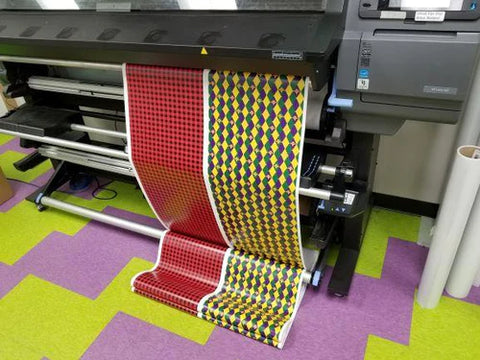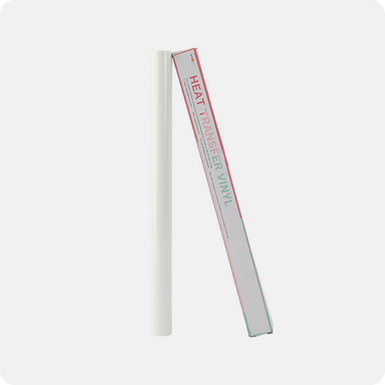
Recommended products

SECURED PAYMENT

FREE SHIPPING ON ORDERS $39+
3-15 Days Delivery

MONEY-BACK GUARANTEE
Your satisfaction is our priority










3-15 Days Delivery

Your satisfaction is our priority

One of the biggest misconceptions we see is the usage of the term "printable heat transfer vinyl". also known as printable HTV. It can be reflected on the situation where many people think of printable HTV as heat transfer paper. To distinguish the differences from people's mindset, this article comes out.
Can you print on heat transfer vinyl? Heat transfer paper can be printed using cheap desktop inkjet printers or laser printers, which are very common printers that many families already have. Common brands include Oki, Samsung, Canon, Brother and Epson. It uses the same printer and ink you use to print on printer paper at home-no special ink is required!

The use of heat transfer paper is an excellent and economical way to print your own heat transfer and realize a multi-color design without having to layer vinyl. You don't have multiple layers of HTV vinyl, which means just one heat press! In addition, the appearance cannot be obtained by using regular heat transfer vinyl. We don't have printable HTV for inkjet printers and printable HTV vinyl for laser printer.
Heat transfer paper will be the same everyday garments as heat transfer vinyl, including cotton, polyester and blends. However, durability is a reflection of the inexpensiveness of the product. If you follow the correct care instructions, the heat transfer paper will last about 25-30 washing cycles. When approaching the 25-30 washing point, it starts to fade and crack. That being said, heat transfer paper can make the life of the garment last for a short time. Although durability may not be as good as vinyl, heat transfer paper is still a very popular choice for making garments for various purposes such as birthdays, recognition, family gatherings/parties and memorials.
Inkjet and laser printers have different heat transfer papers. However, they produce very similar results. In addition, there are different heat transfer papers specially designed for light and dark clothing. We encourage you to always conduct research and make sure that the product can be used normally before purchasing inkjet printable heat transfer vinyl.
Printable heat transfer vinyl is another great way to print your own heat transfer and achieve a multi-color design without having to layer vinyl. However, the initial investment required to start this work is much higher than using heat transfer paper.

As mentioned above, printable HTV requires a wide format printer. Inkjet or laser printers do not work! These printers start at about $5,000, but they are usually much higher. Common brands well-known in the industry include Mimaki, Roland and Mutoh. Epson and HP also produce "wide-format" printers. Printable HTV is usually printed with full CMYK color process on wide format printers that use special inks (such as Solvent or Eco-solvent ink), but the use of Latex ink is becoming more and more common in the industry. Latex ink is particularly beneficial because they require almost no drying time during printing, thus increasing the amount of printing that can be done. Wide-format printers are available in a variety of widths, ranging from 20 inches to 60 inches, which is why the actual vinyl roll width used by the printable HTV is between 15 inches and 60 inches instead of a "sheet" size .
As mentioned above, printable HTV requires a wide format printer. Inkjet or laser printers do not work! These printers start at about $5,000, but they are usually much higher. Common brands well-known in the industry include Mimaki, Roland and Mutoh. Epson and HP also produce "wide-format" printers. Printable HTV is usually printed with full CMYK color process on wide format printers that use special inks (such as Solvent or Eco-solvent ink), but the use of Latex ink is becoming more and more common in the industry. Latex ink is particularly beneficial because they require almost no drying time during printing, thus increasing the amount of printing that can be done. Wide-format printers are available in a variety of widths, ranging from 20 inches to 60 inches, which is why the actual vinyl roll width used by the printable HTV is between 15 inches and 60 inches instead of a "sheet" size .

If you are running a heat transfer business and want to expand that business, printable HTV is a good way to increase the variety. Compared with non-printable HTV, you can print smaller details and larger color range. Printable HTV is very suitable for printing custom patterns and even full-color logos. Its quality is better than heat transfer paper, and it is much more durable, if used correctly, it will usually exceed the service life of the clothes. Unlike heat transfer paper, fading and cracking of printable HTV rarely occurs.
Printable HTV cannot work with ordinary desktop printers or heat transfer vinyl printer (such as inkjet printers or laser printers) that you might use at home. In order to print effectively on printable HTV, a printer that uses Solvent, Eco-solvent or Latex ink is required. Such printers are often referred to as "wide-format" printers since they greatly exceed the size (and price) of any desktop inkjet printer for heat transfer or heat transfer paper laser printer. This is why the printable HTV can be loaded with actual vinyl rolls with a width between 15 inches and 60 inches, because the best printable heat transfer vinyl is designed to fit large printers!

On the other hand, heat transfer paper is not exactly like heat transfer vinyl. Just like in the title, it feels very like paper. Inkjet printer for heat transfer and heat transfer laser printer are specifically designed to use paper, not vinyl! Therefore, heat transfer paper is intended for printing with inkjet printers or laser printers. Heat transfer paper uses a smaller "sheet size" package with a more reasonable size, suitable for desktop printers.

![[Ultimate Premium Bundle] Auto Heat Press Machine 15" x 15" 110V + 20 rolls HTV Bundle 12“x3ft + Mini 2 Heat Press Machine + Sublimation & Tools Bundle](http://www.htvront.com/cdn/shop/files/205_2_385x.jpg?v=1733987310)
![[Limited time deal]HTVRONT Auto Heat Press Machine for T Shirts 15x15 110V - (2 Colors) & Giveaway,Smart T Shirt Press Machine with Auto Release - Professional Heat Press for Sublimation, Vinyl, Heat Transfer Projects](http://www.htvront.com/cdn/shop/files/14_48773b2b-acb1-4eac-beda-65c369acbd5e_385x.jpg?v=1736306859)




Reselect your machine
Reselect your machine
Reselect your machine
Reselect your machine
Reselect your machine

To improve our service quality, we value your shopping experience at HTVRONT official website and your willingness to recommend us to others. Please take a few moments to complete this survey.Your opinions are important to us. Thank you for your participation and support!
Website interaction (e.g., shopping page, promotion, order, payment process)
Product (e.g., product quality, style)
Logistics (e.g., shipping, delivery)
Customer Service (e.g., response speed, professionalism)
[Website - Shopping Page]
[Website - Promotion]
[Website - Order and Payment Process]
[Product]
[Logistics]
[Customer Service]
Customer Reviews
Can I use sublimation ink printing on the printable htv